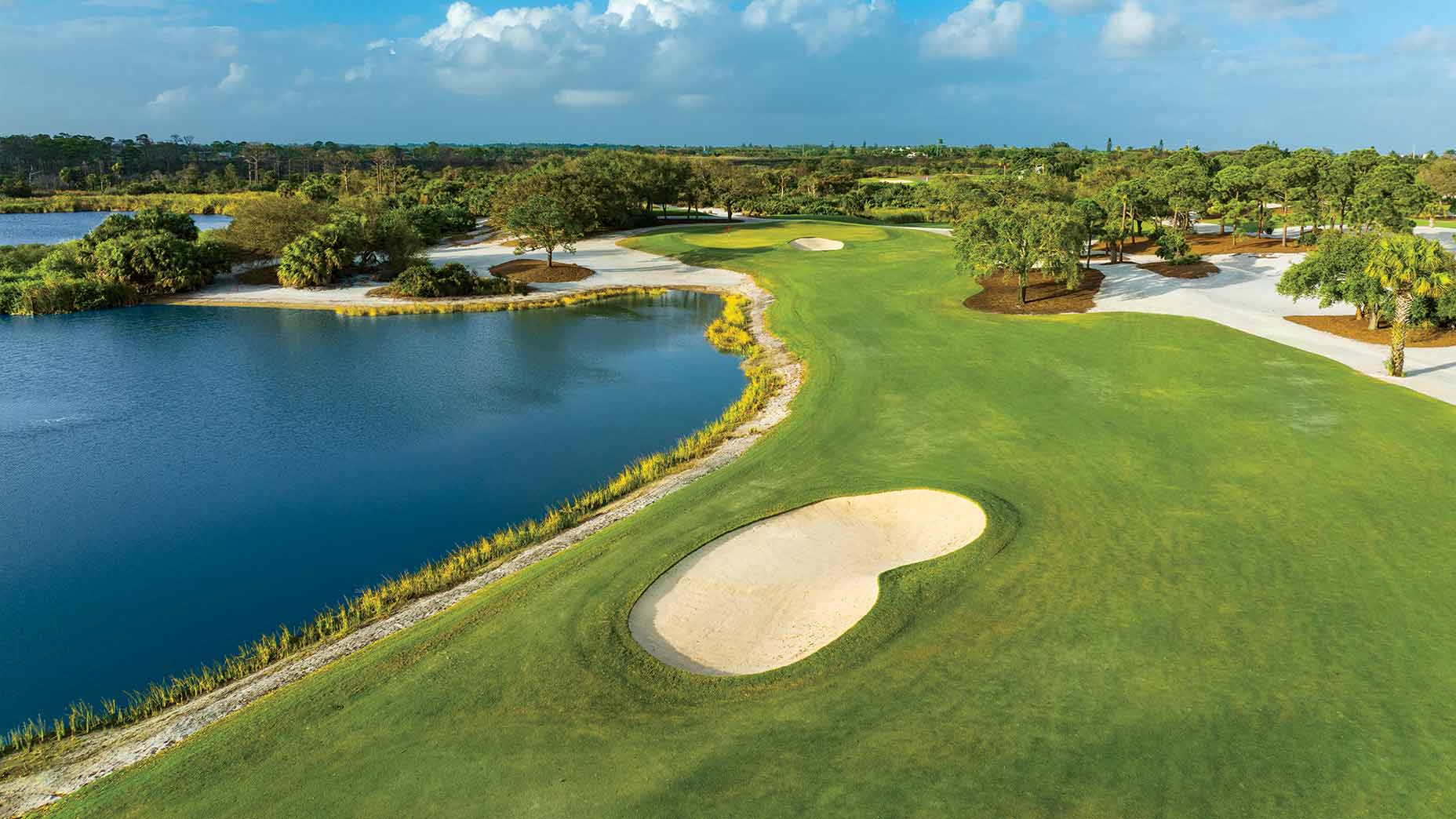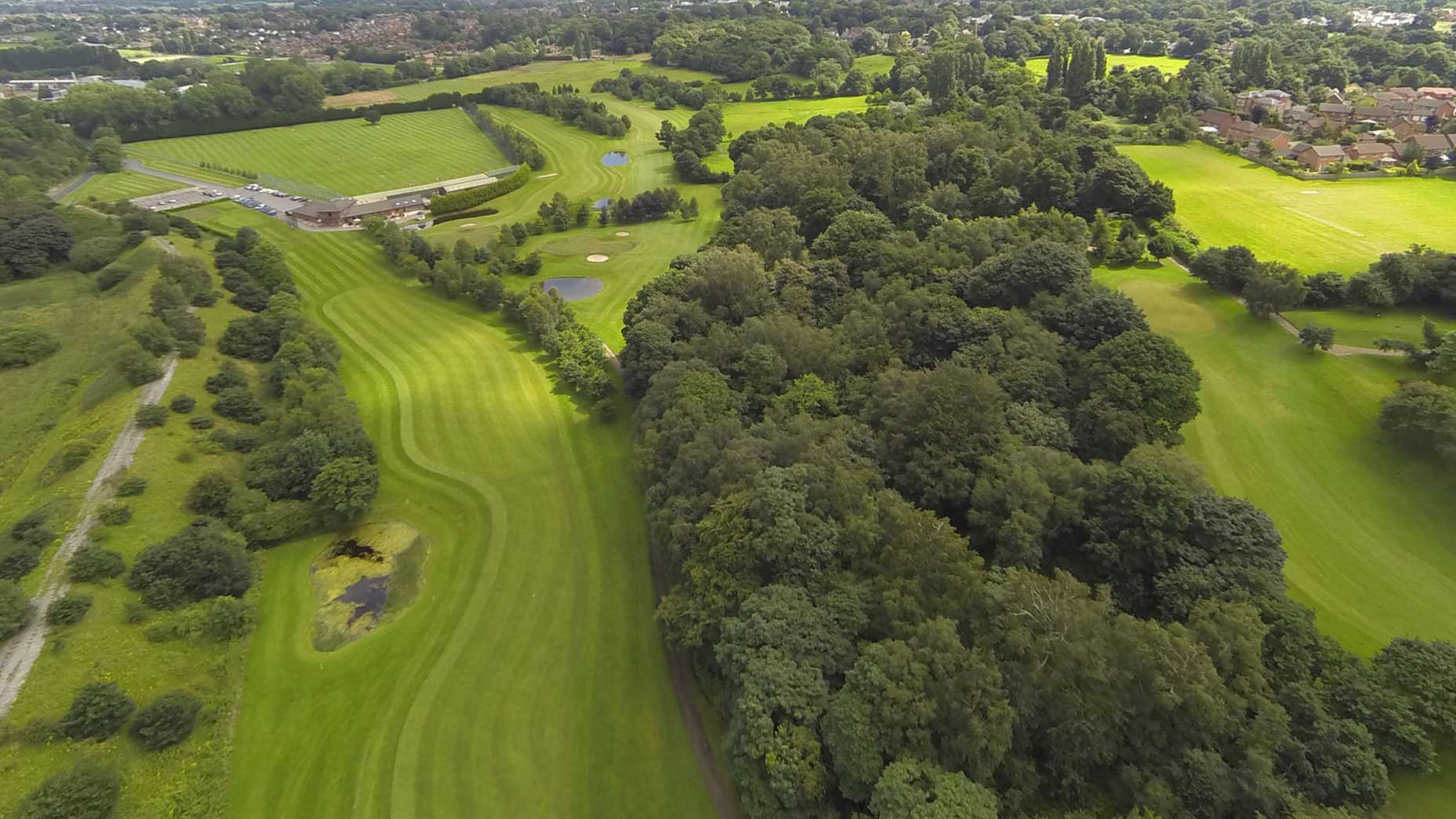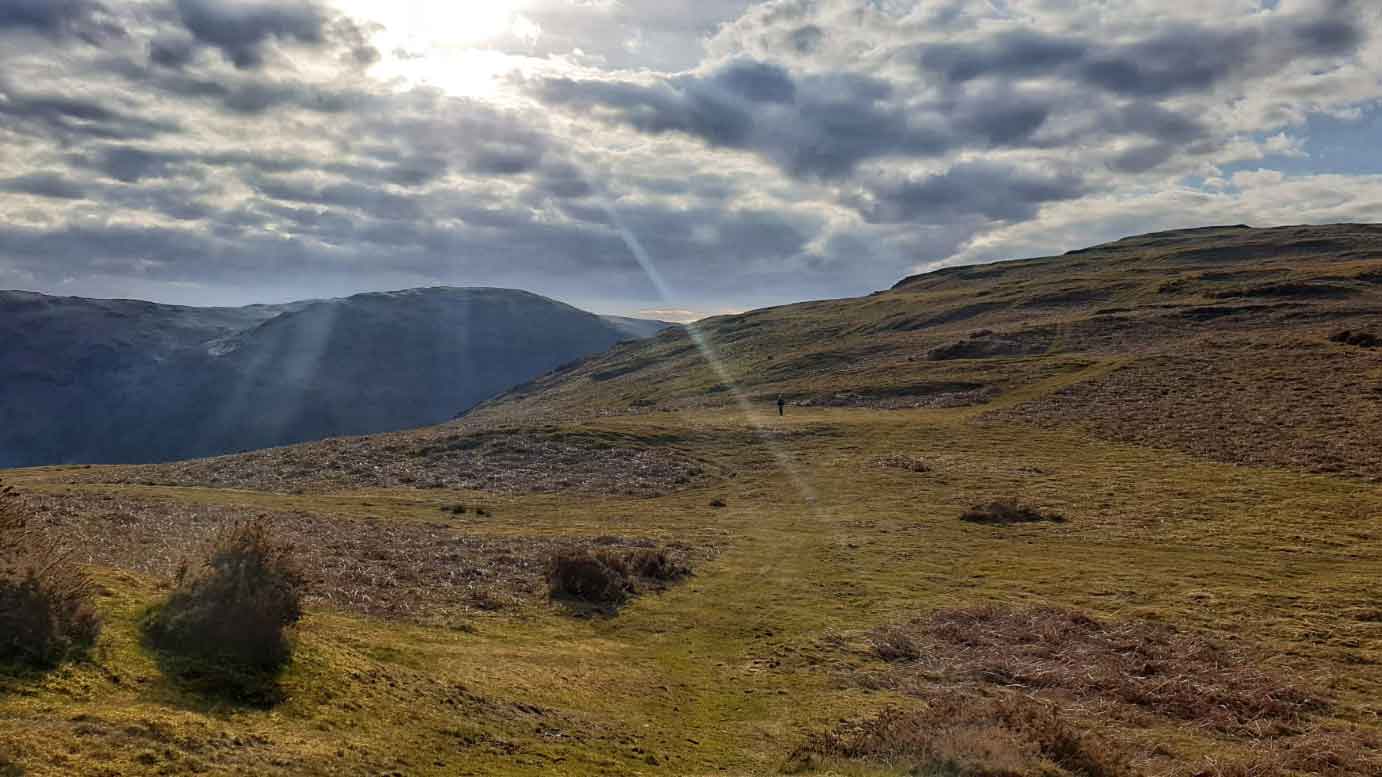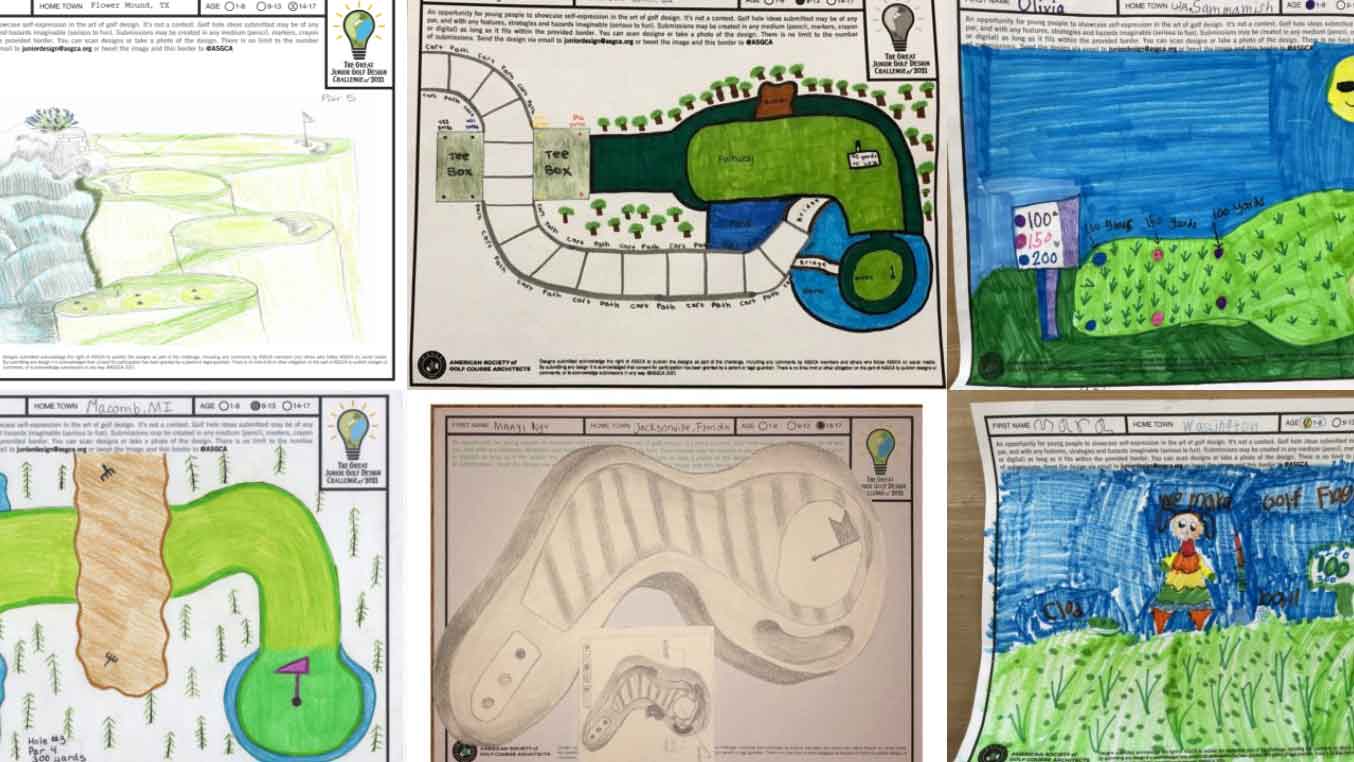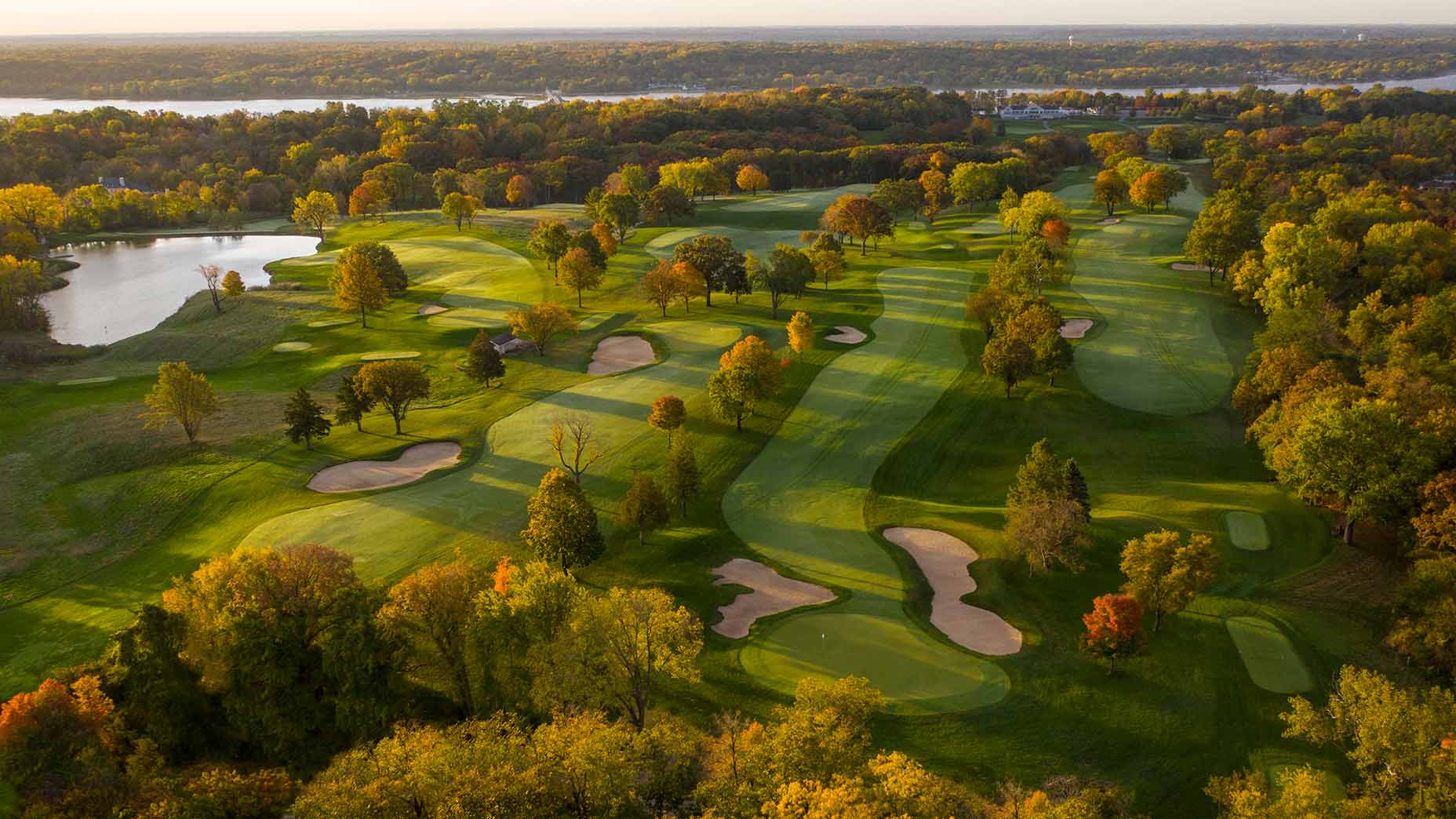Is this the perfect par 4? An inland links-style design with Scottish touches
- Share on Facebook
- Share on Twitter
- Share by Email
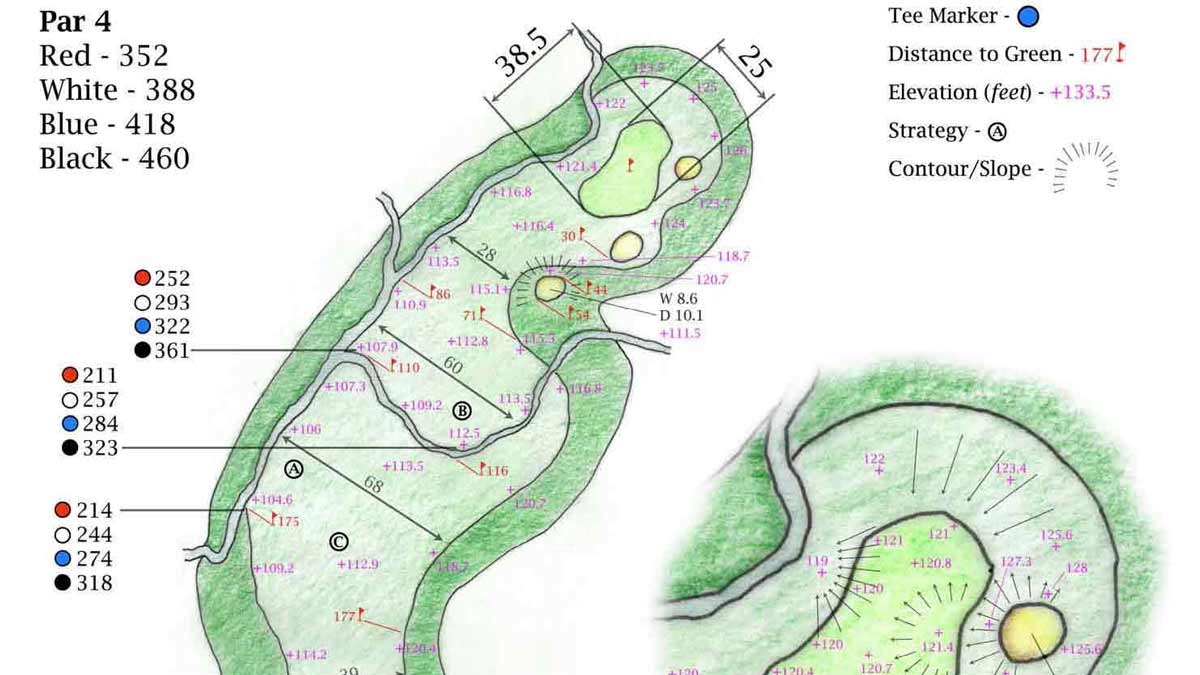
Tim Bailey's par-4 design for the GOLF + Nicklaus Design Challenge.
Courtesy
Ed. note: The inaugural GOLF + Nicklaus Design Challenge, to which contestants submitted plans for their dream par 4s, attracted nearly 200 entrants. From that group, the experts at Nicklaus Design, along with a handful of GOLF editors and writers, nominated 10 finalists — and now we’ve recruited your help in picking the winner. (You can cast your vote here.) To give you more insight into the designers behind the designs and how they conjured their holes, we’re profiling each of them in more detail in the coming days. The winner — which will inspire a hole design on an upcoming Nicklaus Design course — will be announced on or before May 15.
Previous finalist spotlights: Todd Bramwell, Bryan Orellana, Trevor Hansen, Arno Kamphuis, Keith Maysley, Daniele Smith, Chance Williams
DESIGNER: TIM BAILEY
Age: 38
Residence: Sydney, Australia
Occupation: Designer for a hearing-implant manufacturer
Handicap: An unofficial 22. I have a personal goal of trying to break 90 for the first time ever. Maybe this year.
Been playing golf for: About 18 years. I started playing quite late, probably because my parents weren’t that interested in sport. It wasn’t until I was in my early-20s, while at university, that I started playing with my brother and a couple of mates. I remember as a kid, we would play golf in my parents’ backyard with whatever we could find as a substitute for a club and ball. Our mum still reminds my brother and me of the time we broke her garden hoe while playing a couple of makeshift holes in the backyard. The hoe was custom made by her dad which he passed down to her. Even to this day she still reminds us it was the best hoe she ever had. Nothing beats homemade I guess!
Favorite course you’ve played: Stonecutters Ridge, designed by Greg Norman and in Sydney’s western suburbs. There are a lot of great courses around Sydney (and throughout Australia) but this is the best I’ve had the privilege to play. I’ve always scored quite well when playing this course. I think it’s a great example of good golf-course design, as it’s forgiving nature still allows someone with a somewhat high handicap to score well.
Course you’d most like to play that you haven’t: So many great courses from some of the great architects come to mind. How do you narrow it down to just one?! St. Andrews definitely comes to mind. I’ve also always appreciated the design and aesthetics of the Cypress Point Club designed by the great Alister MacKenzie. And, due to its ultimate exclusiveness, Augusta National is also on my list.
WE WANT YOUR VOTE! Click here to pick the perfect par 4 from among our 10 finalists

Ever designed a golf hole before? Does a putt-putt hole count? I designed an 18-hole putt-putt course while I was in university. I used computer software to draw it up. But as for a proper-sized golf hole, I’ve never put any of my ideas down onto paper. I suppose I’ve always thought about redesigning existing holes or courses I’ve played. But those ideas only ever stayed in my head. The hole I drew for the competition is actually part of an 18-hole course I sketched only last year.
Time spent on your design? Approximately 30 hours. As mentioned above, this hole was part of an 18-hole course I already sketched up. So, the 30 hours doesn’t include the initial sketch, which was quite fast actually. It probably took only 30 minutes to lay out the 9th hole as part of the other 18 holes. Some took a lot longer. The 30 hours also doesn’t include the time I spent creating the virtual version of the hole. So after I selected Hole 9 to sketch up in more detail, I spent a bit of time working out the scale. Especially as my initial sketch was in metric measurement and I needed to convert it to imperial. I then took a screenshot of the virtual version. Printed it out to the correct scale. Then traced the outline onto tracing paper. I then used colored pencils to give the outline more detail and emphasis. Once I was happy with the sketch, I then scanned the design so I could add the detailed yardages, elevations, etc. The detailing took the bulk of the time, probably about 20 hours over several days.
WE WANT YOUR VOTE! Click here to pick the perfect par 4 from among our 10 finalists
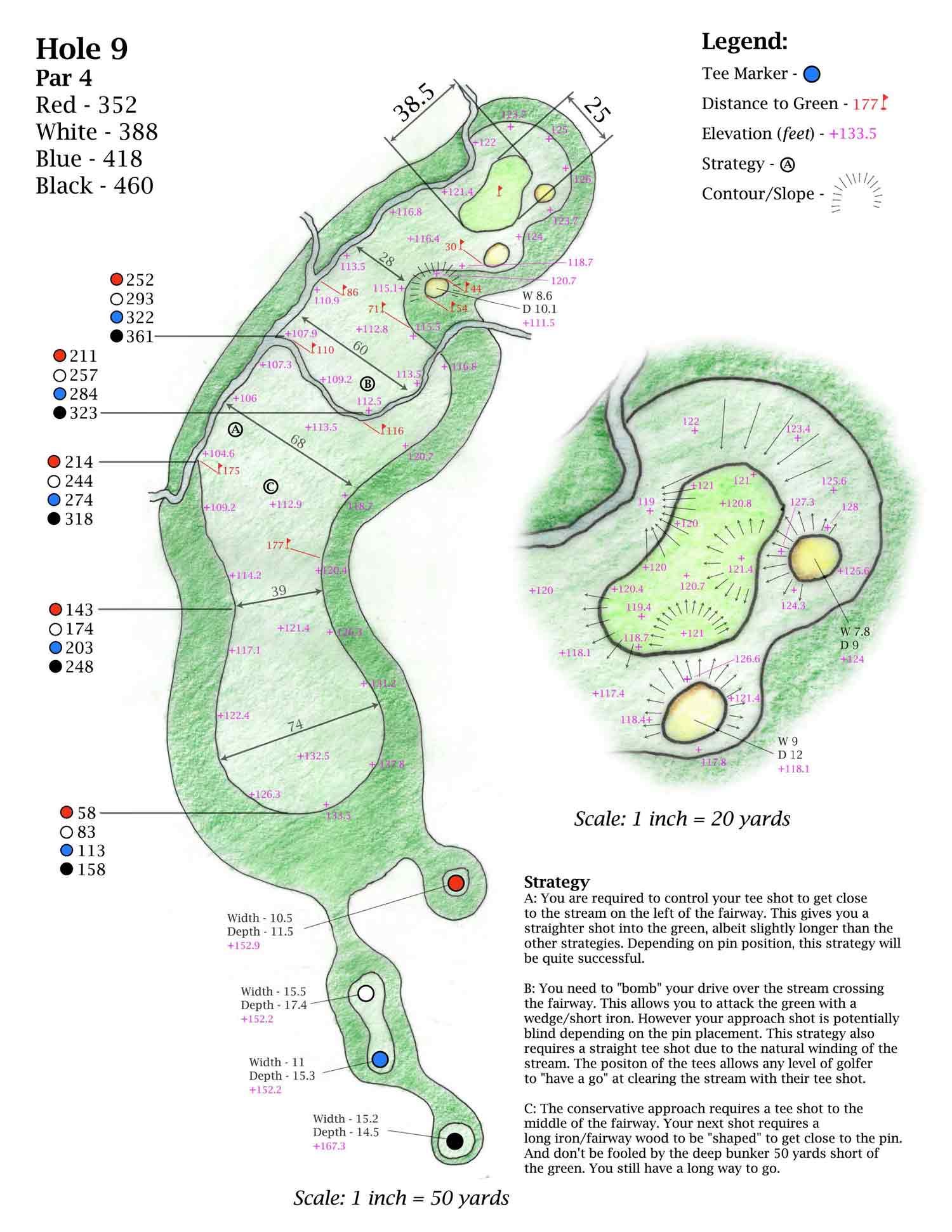
Please explain your creative process.
I feel the site dictated the design, as is the case for all great courses/holes. Having driven passed the site for many years, I could easily visualize how the individual holes would play. It all comes together in your imagination and then it’s a case of accurately putting it down on paper. Having an actual site definitely helped with the design process for this course and especially the hole selected. I knew where I wanted the clubhouse, which way Hole 1 would play, and therefore the location/shape for both Hole 9 and Hole 18. The hardest part was using the colored pencils to bring the course to life. I knew how I wanted it to look but I don’t yet have the skills to achieve it. The only other time I have used colored pencils was for a design I completed for my front garden a couple of years ago.
In regards to what inspired me, the original idea for a golf course on that particular site was from my brother. He mentioned it years ago when we were driving past the site one day. I guess the thought stayed in the subconscious for a while, and then last year I decided I would sketch something up for fun. Also mentioned in the submission, the overall design philosophy for the course and individual holes is to minimize the advantage of the long hitter. I suppose that philosophy developed while watching golf tournaments over the last few years. You would often hear the commentators talking about the long hitters and that modern golf course design is giving them an advantage. And then there is also the ongoing distance debate. I remember very strongly one of the commentators (I think it was Sir Nick Faldo) mentioning the importance of angles during the television coverage of the 2019 PGA Championship at Bethpage Black. So that was definitely an inspiration for this course/hole.
The site is open farmland so the idea of laying out a links style course immediately sprang to mind. Even though the site is nowhere close to the ocean, it is mostly treeless and exposed, so I felt a links style course would be the most appropriate. I suppose it’s also because there are a lot of inland links style courses in Australia. And because it’s a links style course, images of pot bunkers and burns/streams on Scottish links courses come to mind. So, it was convenient the contours of the site presented an opportunity to use some of these features in the selected hole design.
Click here to see all 10 of our finalists and vote for your favorite design.

Latest In Travel

Alan Bastable
Golf.com Editor
As GOLF.com’s executive editor, Bastable is responsible for the editorial direction and voice of one of the game’s most respected and highly trafficked news and service sites. He wears many hats — editing, writing, ideating, developing, daydreaming of one day breaking 80 — and feels privileged to work with such an insanely talented and hardworking group of writers, editors and producers. Before grabbing the reins at GOLF.com, he was the features editor at GOLF Magazine. A graduate of the University of Richmond and the Columbia School of Journalism, he lives in New Jersey with his wife and foursome of kids.
